The 15-70-15 Rule
“Take aim at the heart of your workforce.”
In order to maximize performance, it’s important to understand the cross-section of a typical work force. It’s common for a normal group to have 15% of its employees in a top, elite group. On the other hand, 15% may be disengaged or problem employees. This leaves the bulk of your work force, 70%, in the middle.
The group at the top consists of self-motivated, talented employees. Most of these people are experienced and take it upon themselves to do their jobs in the best way possible. This elite group produces outstanding results whatever the motivational factors may be.
On the reverse side, the bottom 15% is generally unmotivated and disengaged. This bottom percentile does not have experience and most likely will never obtain it as they bounce from one job to the next. These people more than likely will not be with you in the future.
The group that makes up the major portion of your work force is the middle 70%. The results, records, and bottom line of your organization are dependent on whether this middle percentile can be motivated and trained to improve. The individuals within this middle group must feel they have an attainable goal and will be recognized for improving their personal performance. It is unrealistic in their minds to strive to be better than the elite employees.
When structuring a performance recognition strategy, it’s important to focus on this middle 70%. Programs that only highlight the top 15% spend money on people who will probably accomplish similar results independently. The focus should be on the portion of the work force that will bring the biggest return. Every employee in the middle 70% should feel they have the ability and opportunity to achieve pre-set goals.
In many situations, we have found that incentive dollars and manager time are directed incorrectly. Most of the time and resources are spent with the low achievers who will not be with the organization in the future, while most of the incentive budget is spent on the high achievers who would have accomplished similar results independently. Focus on motivating and engaging the middle 70% and watch your performance improve.




